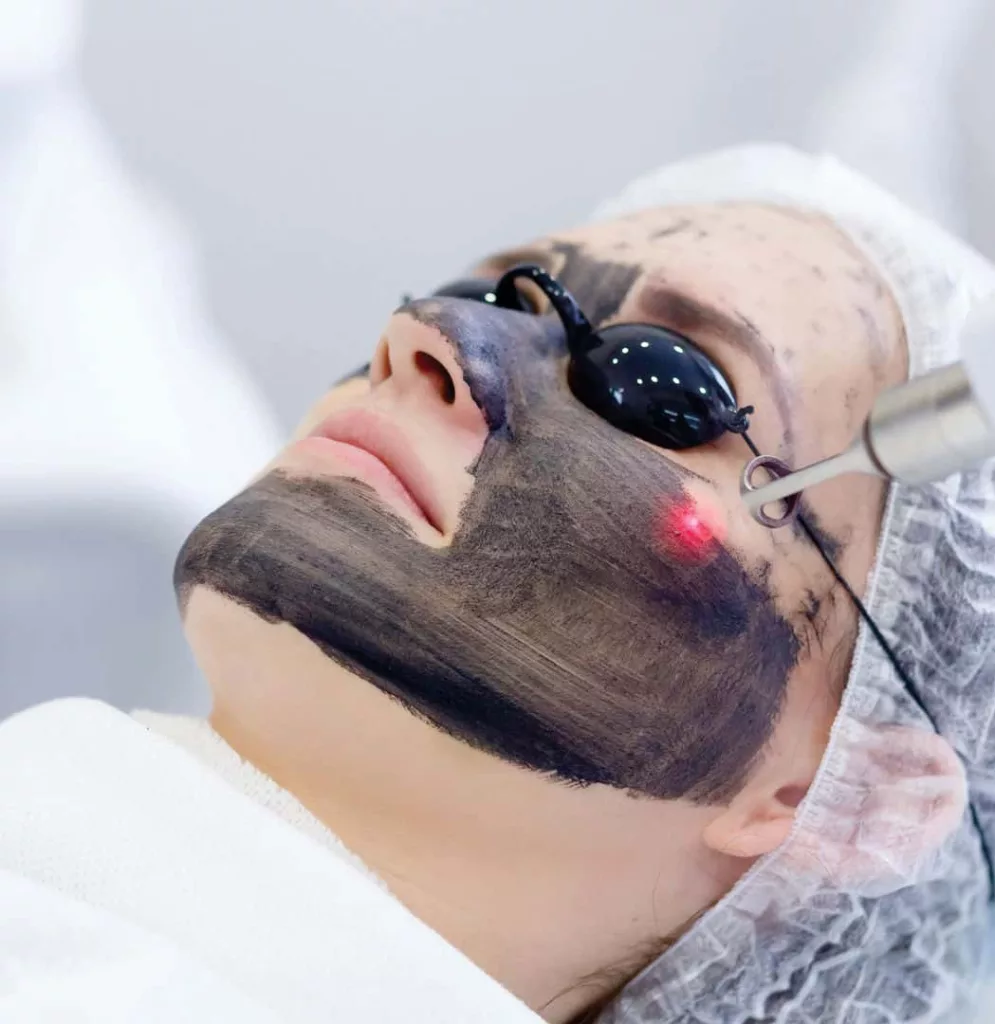
Skin Rejuvenation Treatment In Hyderabad
The Q-switched laser is a non-invasive laser that is used to remove unwanted brown spots, freckles, or tattoos. The laser beam pulse lasts a billionthof a second and corrects pigmentation irregularities without harming the surrounding tissue. When the high-intensity pulsed beam light is directed towards the pigment, it absorbs the laser energy and disintegrates so the body can naturally dispose of the waste pigment. The Q-switched laser reaches deep layers of the skin to significantly reduce pigmentation.

FAQs
How is this treatment useful?
The clinically proven Q-switched laser can successfully lighten or eliminate a few isolated, coloured spots (small or large) and sunspots on the arms, chest, or legs. For many diffused spots, we recommend a photorejuvenation treatment that uses intense pulsed light (E-Light) or the Fraxel laser. The Q-switched laser is not recommended for pregnant women, patients who have taken the medication Accutane for the past six months, or persons undergoing treatment for cold sores or herpes simplex virus.
How does it work?
Laser stands for ‘Light Amplification by Stimulated Emission of Radiation.’ The Q-switched laser is an innovative treatment for unwanted brown spots, freckles, tattoos, and sunspots on the arms, chest, or legs. The laser energy is concentrated into powerful pulses that penetrate the layers of skin and shatter pigmentation. The laser energy feels like several tiny hot dots on the skin. During the treatment, a stream of cold air can greatly reduce any discomfort. We use an anaesthetic for pain-free tattoo removal.
What are the benefits?
- A clinically proven method to treat a variety of skin conditions
- A single treatment usually removes75–100% of individual brown spots (A second orthird treatment may be needed to completely neutralise the colour)
- Tightens sagging skin and improves facial appearance
- Quite effective for tattoo removal and skin problems
- Long-lasting skin rejuvenation results
Are there any risks or side effects?
Prior to the treatment, our team will discuss potential risks and side effects with you. A red or brown spot may appear when the crust heals. Although this spot is temporary and goes away on its own, it can be treated if it remains for a long time. Infections and/or scars are rare. As the skin is more sensitive to sunlight after the treatment, it is necessary to use sunblock/sunscreen to avoid the UV light. Laser treatment should be avoided in an area with an open cut or wound to prevent hyperpigmentation.
What are the post-treatment precautions?
You may feel a burning sensation in the treated area for several minutes or a few hours. The spots become red and form crusts or a few days to 2 weeks (3–4 weeks for legs). You may apply Vaseline or petroleum jelly and use bandages to speed up healing. Depending on the location and how well they are taken care of, the crusts healing 3–14 days(longer for arms and legs). Following a good skincare routine and avoiding sun are important to optimise post-treatment results.


